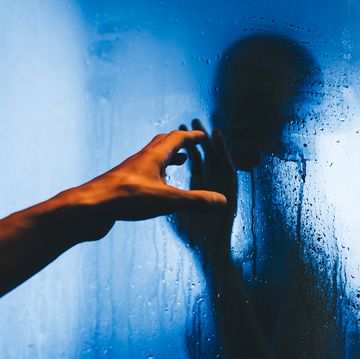- India’s Lonar Lake has mysteriously turned pink.
- The 50,000-year-old lake changed colors (from its original green) in a few days.
- Researchers have sent samples to labs to confirm why the color shift happened, but they believe high saline levels may be a factor.
The crater-made Lonar Lake located in west-central India has bewildered residents and researchers after the water miraculously changed colors from its typical green to pink. The change in hue started in early June before finalizing to a reddish pink in just a matter of days.
NASA Earth Observatory captured images of the nearly 50,000-year-old lake on May 25 and then again on June 10 of this year, displaying a before-and-after of the color modification. Scientists aren’t completely sure why the crater lake in the state of Maharashtra suddenly turned pink, but they have a few theories.
The shift may have something to do with the high amounts of salinity in Lonar Lake’s water, comparing this instance with that of Lake Hillier in Australia. Officials are convinced that Lake Hillier gets its bright rosy hue from a microorganism called Halobacteriaceae, which is known for its pink color. Organisms from this family live in water that has high levels of saline. However, what offsets the jade color is a unicellular green algae called Dunaliella salina.
According to NASA Earth Observatory, D. salina is green when “water conditions are favorable.” If the water has high concentrations of saline or is even exposed to a lot of light, officials say these harsh conditions will cause algae to produce what’s called protective carotenoids (pigmented compounds), such as the orange-red beta carotene, potentially turning the water pink. Although the hyper-saline Lake Hillier is in a constant state of pink, researchers think it is possible that Lonar Lake changed colors due to stressful water conditions that occurred in a short amount of time.
Another theory? Because water levels have depleted due to evaporation caused by the dry weather, there may be more saline in the lake now than there was prior to June 2020. Officials reference Lake Urmia in Iran for this theory, where the body of water becomes red during dry seasons, creating a combo of high amounts of saline and lower water levels.
“There have been such instances in other parts of the world,” Sanjay Rathod, Maharashtra’s State Forest Minister told The Hindu. “In a lake in Iran, the water turns reddish due to increase in salinity. We are still studying the phenomenon, but it is certain that no artificial occurrence resulted in the change in color.”
While these theories have not been confirmed—at least not yet, anyway—the Maharashtra Forest Department has sent water samples to two labs in Nagpur and Pune, and are waiting for the results.
Support from readers like you helps us do our best work. Go here to subscribe to Prevention and get 12 FREE gifts. And sign up for our FREE newsletter here for daily health, nutrition, and fitness advice.













